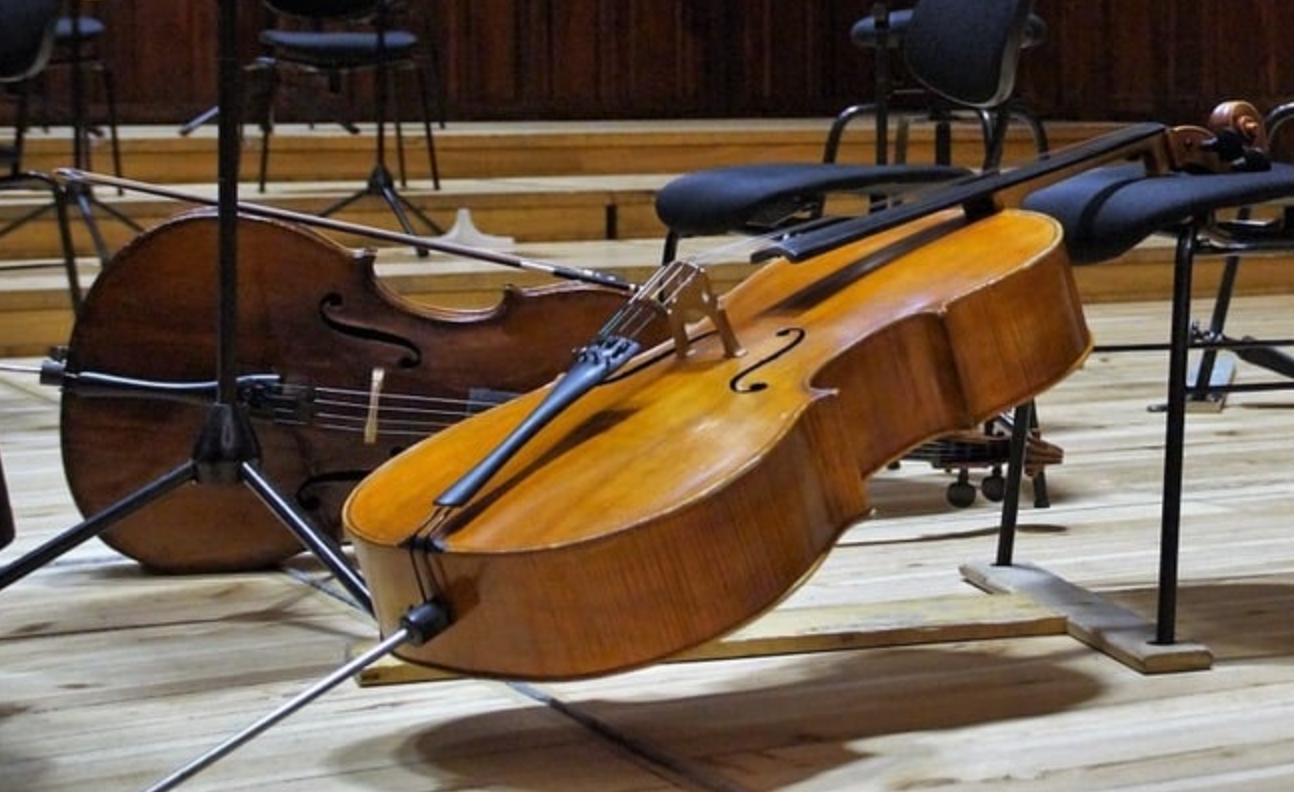
Songs penetrate human consciousness with surgical precision, becoming permanent fixtures in our emotional architecture long after first listen. The perfect marriage of melody and lyric creates a psychological shorthand that captures life-altering moments in three-minute bursts, turning strangers’ words into our own personal anthems and battle cries.
Songwriting reveals the raw nerve endings most people spend their lives carefully hiding.
28. The Emotional Currency

The human brain treats emotional music like neurological candy, craving it more desperately than TikTok dopamine hits or caffeine. Listeners don’t just want songs – they hunger for validation, for proof they’re not alone in their heartbreak, rage, or messy joy. The influence of music’s message goes deeper, with how lyrics shape emotional health playing a significant role in amplifying or soothing emotional states.
Great songwriters function as emotional smugglers, sneaking complex feelings past listeners’ defenses. When someone connects with your song, you’ve transformed passive consumption into active participation – like breaking the fourth wall in a psychological thriller.
The best songs create empathy highways between strangers who might never speak but understand each other through shared emotional wavelengths. Make somebody feel something real and you’ve created more than entertainment – you’ve built a shelter for the misunderstood.
27. The Four Pillars of Songcraft

Every song that’s ever made someone cry in their car at 2 AM relies on four fundamental elements working in calculated conspiracy. Lyrics deliver your message while rhythm and sound create the emotional architecture. Chords function as mood lighting, transforming the same melody from wedding material to breakup anthem with a minor substitution.
Melody provides the unforgettable hook that strangers will hum decades later. Groove determines how these elements unite – it’s the difference between a protest march and a slow dance.
These components must work together like a well-rehearsed heist crew – each playing their role without stepping on the others. When Paul McCartney dreamed the melody to “Yesterday,” he initially sang nonsense syllables about scrambled eggs. The tune worked because the melodic structure created emotional tension before a single real word entered the picture.
Your challenge? Making these elements conspire together to trigger the exact emotional response you’re targeting, without revealing the calculated manipulation behind your art.
26. Lyrics: The Rhythm Conspiracy

Shakespeare didn’t become history’s most quoted writer by accident – he weaponized rhythm and sound with surgical precision. Powerful lyrics treat syllables like percussion instruments, creating internal backbeats that would make drummers jealous. The difference between forgettable words and unforgettable lines often hides in sonic texture – the satisfying mouth-feel of certain sounds strung together like Christmas lights.
Words create emotional magic through tension and release. Place them carefully and you’ll build anticipation like a horror movie director controlling exactly when the audience gasps. The rhythm of language creates stability and instability, emotional safety and danger. Neglect sound patterns and your lyrics float lifelessly, regardless of their meaning.
Obsess over rhythm and suddenly mediocre words transform into mantras, protest chants, and wedding vows. Every great slogan, from political campaigns to fast food jingles, succeeds through rhythm first, meaning second.
25. Chords: Emotional Lighting Directors

Hit songs rely on harmonic progression the way Hollywood blockbusters depend on lighting cues to telegraph when you should feel scared, sad, or triumphant. Chords don’t just support melodies – they’re emotional lighting directors, transforming identical lyrics from hopeful to heartbreaking with the subtle shift from major to minor. They frame the melodic performance like stage lighting frames actors, directing attention and emotional response.
This harmonic coloring creates the stage where melodies perform their emotional stunts. The job isn’t standing center stage stealing attention – it’s creating the perfect backdrop that makes the star shine brighter. Finding the right chord progression feels like adjusting the color temperature of a photograph until it perfectly captures the mood you remember, not just the facts of what happened.
Even when listeners can’t identify what changed, they feel the emotional weather shift when you substitute one chord for another. The right progression works like emotional sleight-of-hand – invisible technique creating visible impact.
24. Melody’s Emotional Dictatorship

A killer melody transforms music from background noise to psychological invasion, colonizing brain space and refusing to leave. Melodies carry emotional weight that far exceeds their simple note patterns, becoming the skeleton that lyrics flesh out. Focus on crafting stronger melodies and you’ll level up your songwriting faster than any other approach – it’s the hack code to listener addiction.
Isolated melodies resemble lone wolves – powerful but limited. They achieve their full emotional potential through the conspiracy with harmony and rhythm. Different scales create distinct emotional flavors – major scales for straightforward brightness, minor for complexity and tension, modes like Dorian or Phrygian for cultural and historical flavors.
The catchiest melodies function like musical viruses, transmitted between humming strangers on subway platforms. Record yourself singing gibberish while driving or showering – your subconscious often crafts better melodies than your overthinking brain.
23. Groove and Style: The Invisible Architecture

While bedroom songwriters obsess over lyrics and chord progressions, professionals know groove determines whether bodies move or remain still. Groove encompasses the invisible but crucial decisions: Are you playing staccato or legato? Landing directly on beats or dancing around them? Creating rhythmic patterns that feel like running downhill or trudging through mud? These subtle choices shape listener expectations and physical responses more than most realize.
Style acts as the unseen architecture that shapes everything from mixing decisions to promotional photography. Great groove elevates mediocre material past technically superior compositions – just ask anyone who’s abandoned sophisticated jazz for three-chord punk rock that just feels better.
The “just feels better” quality that listeners can’t articulate but instantly recognize comes from groove decisions that align perfectly with emotional intent. Before worrying about clever lyrics or complicated chord progressions, make sure your song’s foundation makes bodies respond instinctively. Everything else is decorative compared to this fundamental emotional architecture.
22. Aiming Beyond Amateur Hour

Professional songwriters create emotional experiences with the precision of pharmaceutical companies designing medications – they know exactly what responses each element triggers and combine them for maximum impact. The goal isn’t technical impressiveness but emotional effectiveness. Approaching songwriting as a vehicle for showing off clever wordplay or complicated chord knowledge is like using a Ferrari as a grocery cart – missing the entire point of the machine.
Many songwriters get trapped thinking technical skill defines quality when emotional resonance actually determines success. The world’s most technically accomplished song that leaves listeners cold is worthless compared to three simple chords that make strangers cry.
Perfection matters less than authenticity – a truth evident in everything from punk rock’s deliberate roughness to the imperfect vocal takes preserved on hit records because they captured genuine feeling. When evaluating your work, ask whether it makes someone feel something rather than whether it demonstrates your musical education.
21. When Overthinking Kills the Vibe

Creative paralysis strikes when songwriters convince themselves arbitrary rules matter more than results. The “right way” to write songs is whatever method produces emotional connection – everything else is academic distraction. Songwriters ruin perfectly good material by second-guessing instincts and forcing natural emotional expression into unnatural technical frameworks, like film directors choosing perfect camera angles for scenes with terrible acting.
Trust your gut when it tells you something works, even if you can’t explain why theoretically. The moment you start thinking “this chord progression is too common” or “these lyrics aren’t poetic enough,” you’ve shifted from creator to critic – a fatal mid-process mistake.
Simplicity often creates more emotional impact than complexity, which frequently functions as emotional armor protecting songwriters from vulnerability. Just say things directly, the way you would to someone you trust completely. The payoff? Authentic expression that resonates with strangers who recognize emotional truth when they hear it.
20. The Overthinking Epidemic

Complex arrangements and elaborate wordplay often mask simple emotions that writers feel too exposed to express directly. The compulsion to sound poetic, clever, or musically sophisticated destroys more potential hits than any other songwriting mistake.
This overthinking epidemic spreads through music schools and songwriting workshops where technical achievement gets rewarded over emotional impact – teaching musicians to prioritize impressing peers over connecting with actual audiences.
Embrace common progressions, straightforward statements, and simple structures when they work emotionally. The quest to sound original often produces forgettable music, while embracing established patterns with personal emotional truth creates lasting impact. Musical overthinking resembles using unnecessarily complex vocabulary in a heartfelt apology – the technical impressiveness undermines the emotional purpose.
19. Facing the Vulnerability Monster

Creating authentic songs means standing emotionally naked under spotlights – no wonder songwriters develop elaborate strategies to avoid it. Many write abstract, general lyrics that never risk genuine exposure, producing songs that sound professional but connect with nobody.
The magic happens when you access experiences that are 100% yours, translated into universal emotional language. This doesn’t mean confessional songwriting about your specific breakup – it means channeling your personal emotional experience into material others recognize from their own lives.
Raw honesty creates connection that technical skill never achieves alone. When Adele unleashes unfiltered heartbreak, millions who’ve never met her feel personally seen. The vulnerability terrifying to songwriters becomes precisely what listeners value most.
18. The Focus Failure

Songs aren’t sprawling documentaries but concentrated emotional snapshots – three-minute glimpses that illuminate one feeling perfectly rather than many inadequately. Inexperienced songwriters frequently try capturing multiple emotions or situations in single songs, creating the musical equivalent of overstuffed suitcases that won’t close properly.
Most legendary songs address exactly one situation or feeling with laser focus. “I Will Always Love You” doesn’t explore the complexity of relationships – it captures one specific emotional moment with devastating precision.
Unfocused songs prevent listeners from connecting deeply by forcing them to process too many directions simultaneously. The amateur approach resembles throwing everything into a blender and hoping something tasty emerges; professional songwriting carefully selects minimal ingredients that work perfectly together.
Choose one emotion. Explore it thoroughly. Let everything in the song – chords, melody, rhythm, lyrics – reinforce that single, concentrated feeling.
17. When Lyrics and Music Fight Each Other

Mismatched lyrics and music create cognitive dissonance that confuses rather than moves listeners. Beginner songwriters often craft lyrics that tell one emotional story while their music tells another entirely – upbeat, major-key settings for devastating breakup lyrics, or moody minor progressions supporting celebratory words.
Emotion lives primarily in music while narrative lives in lyrics – these elements must conspire together rather than compete. The music should prepare the emotional ground where lyrical seeds can grow naturally. Try this test: play your melody and chords without any lyrics and ask someone what feeling it evokes.
If their answer contradicts your lyrical intent, reconcile this mismatch before proceeding. Some of pop music’s most effective moments come when melodic shapes perfectly mirror lyrical content.
16. The Patience Problem

Beginner songwriters often expect immediate masterpieces, forgetting that creative skills, like athletic ones, develop through consistent training rather than sudden inspiration. Songwriting resembles building muscle more than waiting for lightning strikes.
Every songwriter starts somewhere – even legends like Joni Mitchell and Leonard Cohen wrote forgettable early material. Give yourself permission to create imperfect work as necessary development. Musical growth happens through volume and repetition, not perfectionism and self-criticism.
Successful songwriters typically produce dozens or hundreds of songs before writing recognizable hits – not because they lacked talent initially, but because craft develops through practice rather than theory. Record your early songs without judgment, understanding they represent essential steps rather than final destinations.
15. Melody: The Emotional Backbone

Melody functions as songwriting’s emotional spine, supporting everything else while often going unrecognized for its crucial role. People remember and sing melodies long after forgetting lyrics – the tune becomes the portable, shareable essence of songs.
Effective melodies grab attention and create emotional bonds through the perfect balance of predictability and surprise. Too predictable becomes boring; too surprising becomes inaccessible. Lead melodies carry primary themes, while harmony melodies provide emotional context and countermelodies create dialogue between musical elements.
Understanding melody means recognizing its psychological manipulation – descending patterns creating sadness, ascending lines building hope or tension, repeated notes generating urgency or obsession. Great melodies feel both fresh and familiar, like meeting someone new who somehow already understands you.
14. Strategic Melody Placement

Melody placement represents songwriting’s chess game. Consider whether your melody begins directly on downbeats (creating stability), after downbeats (creating anticipation), or before downbeats (creating forward momentum). Each placement creates distinct emotional effects that work like subliminal messages to listeners who can’t identify why they feel pulled in particular directions.
Experiment with shifting identical melodies between on-beat and syncopated placements to hear how dramatically these subtle changes affect emotional impact. The difference between forgettable and iconic often hides in these seemingly technical decisions that translate into powerful emotional experiences.
Great songwriters obsess over whether melodies align with or work against chord progressions – creating either satisfying resolution or delicious tension. These placement choices determine whether songs feel predictably comfortable or excitingly disruptive. Recording multiple versions with slightly shifted timing often reveals the perfect placement that transforms good ideas into great ones.
13. Lyrical Scene-Setting

Effective lyrics transport listeners to emotional locations through sensory detail rather than abstract statements. When you paint vivid pictures, listeners visualize personal memories that match the emotional temperature of your song.
This connection through imagination creates stronger bonds than direct statements ever could – showing rain-streaked windows and cold coffee communicates heartbreak more effectively than simply declaring “I’m sad.” Listeners insert themselves into well-crafted scenes, making your song part of their personal mythology.
Imagery and sense-based language trigger neural responses similar to actual experiences, creating immersive emotional environments. Instead of telling listeners your protagonist feels nervous, describe fidgeting hands, racing thoughts, and shallow breathing – allowing them to recognize their own anxiety experiences reflected in your lyrics.
12. Truth Beyond Technique

Authenticity creates the foundation for powerful songwriting that transcends technical concerns. Listeners instinctively sense when songs come from genuine experience versus abstract exercise – they might not identify specific reasons, but they recognize emotional truth instantly.
Your song must sound believable not because of clever rhymes or innovative chord progressions, but because it reflects something humanly true that registers as authentic even to strangers who know nothing about you personally.
The most important aspect of lyrics isn’t literary impressiveness but emotional credibility. This explains why technically imperfect songs often connect more deeply than polished compositions lacking authentic feeling. Writing about emotions you’ve actually experienced creates natural details and perspectives that manufactured scenarios can’t replicate.
11. The Seamless Integration

The greatest songs ever written feel inevitable – as though they were discovered rather than created. This seemless quality emerges when lyrics, melody, rhythm, and harmony blend so perfectly that no single element draws attention to itself at the expense of overall impact.
Songs achieve emotional concentration when every component reinforces the same feeling, creating immersive experiences rather than technical showcases. Listeners remember how songs made them feel more than specific technical features.
Many songwriters mistakenly believe complex arrangements indicate quality when emotional unity actually defines success. This integration isn’t accidental but results from deliberate alignment of all elements toward shared emotional purpose. Think of songwriting as emotional architecture – each component must support the overall structure rather than competing for attention.
10. Starting Simple: The Motif Method

The intimidating blank page becomes manageable when you begin with tiny building blocks rather than complete structures. Focus on creating simple three-to-six note motifs – melodic phrases that function as song DNA rather than finished compositions.
These small patterns, easily remembered and sung, provide foundation material that expands through repetition and variation. Think of motifs as musical sentences that combine into paragraphs and eventually complete stories.
Building from simple motifs resembles the way great directors create films from individual shots rather than trying to capture everything simultaneously. These melodic seeds contain complete emotional ideas despite their brevity – the iconic four-note opening of Beethoven’s Fifth Symphony demonstrates how minimal material can carry maximum impact.
9. The Contrast Principle

Creating compelling songs requires understanding contrast – the musical equivalent of storytelling’s conflict and resolution. Develop second motifs that deliberately differ from your first in rhythm, note count, or pitch range. These contrasting elements create emotional journey rather than static repetition.
Films use this principle by alternating tension and release; songwriters achieve similar effects through melodic contrast that gives listeners both comfort and surprise.
Motif A typically builds energy and tension while Motif B offers release or reflection – together creating emotional stories without words. The contrast can be subtle (slight rhythmic variation) or dramatic (complete melodic reinvention), depending on your desired emotional effect.
This principle explains why verses and choruses traditionally differ in melodic character – the contrast creates dynamic movement that maintains interest. Without this variation, songs become monotonous regardless of lyrical quality. Consider famous songs like “Hey Jude” or “Bohemian Rhapsody,” where contrasting sections create mini emotional journeys within single compositions.
8. The Balance of Familiarity and Surprise

Effective melodic structure satisfies listener brains through strategic repetition and carefully timed variation. Repetition creates comforting predictability while variation maintains engagement – too much either direction loses listeners through boredom or confusion.
This balance explains why rhyme schemes like ABAB work in both poetry and music – they provide recognizable patterns with built-in variation. Lines that share rhymes often feature similar melodic treatment, creating coherent structures that feel intentional rather than random.
Repetition breeds familiarity and emotional comfort, giving listeners anchor points within songs. Variation prevents monotony while creating progressive emotional development. This principle applies beyond melody to all songwriting elements – repeated chord progressions with subtle variations, consistent rhythmic patterns with occasional disruptions, recurring lyrical phrases with evolving contexts.
7. The Show-Don’t-Tell Revolution

Great lyrics show scenes instead of explaining emotions – a principle that transforms abstract feelings into concrete experiences. Rather than announcing “I’m heartbroken,” describe specific details that communicate heartbreak: unanswered texts, returning borrowed books, removing photos from walls.
This technique creates emotional resonance through recognition rather than declaration. Listeners don’t want to be told what to feel – they want to recognize their own experiences reflected in yours.
Use evocative descriptions that trigger sensory memory instead of emotional labels. This approach transforms listeners from passive recipients into active participants who supply their own emotional connections to your carefully constructed scenes.
6. Engaging Multiple Senses

Sensory-rich lyrics create immersive emotional environments rather than abstract statements. Appeal to sight, sound, touch, taste, and smell to trigger physiological responses in listeners – describing cold wind on skin activates sensory memory more effectively than stating “it was winter.” These details create psychological transportation, temporarily relocating listeners into emotional landscapes you’ve constructed through careful sensory mapping.
Include textures, colors, temperatures, and ambient sounds to create three-dimensional experiences rather than flat descriptions. Specificity matters – “faded denim jacket” evokes stronger imagery than “old clothes,” while “whispered promises at 3AM” creates more intimate atmosphere than “late-night conversations.” This technique transforms songs from intellectual exercises into emotional experiences with physical dimensions.
Listeners don’t just understand your songs intellectually – they feel them bodily through activated sensory memories. These details make songs memorable through multiple cognitive pathways rather than just verbal processing.
5. The Power of Precision

Lyrics gain emotional impact through specific language choices – active verbs and precise nouns create vivid mental images that generic terms cannot match. Replace walking with strutting, stumbling, or tiptoeing; substitute car with rusted Impala or cherry-red convertible.
Specific language creates instant credibility by demonstrating observed detail rather than generalized approximation. Compare “she looked upset” with “her mascara traced black rivers down flushed cheeks” – the second creates immediate visual connection and implied emotional depth. This precision eliminates the vagueness that makes amateur lyrics forgettable.
Even without complex metaphors or literary devices, specific language choices create memorable images that lodge in listener imagination. Well-chosen details function as emotional shorthand, communicating volumes through minimal words – crucial in songwriting’s limited space.
4. Embracing Simplicity

Flowery language often masks emotional insecurity – writers hide behind complexity when afraid of appearing vulnerable through straightforward expression. Simple, direct language typically carries more emotional weight than elaborate construction because it removes barriers between expression and understanding. The most memorable lyrics rarely come from thesaurus-mining but from finding the clearest possible articulation of genuine feeling.
Authenticity resonates more powerfully than artificial sophistication. Speak in your natural voice rather than adopting poetic affectation – imagine explaining your feelings to someone who knows you completely. This approach creates lyrics that sound genuinely human rather than performatively artistic.
Many legendary songwriters deliberately simplified their language after recognizing that emotional directness created stronger connections than technical impressiveness. The most universally resonant lines typically use everyday language in slightly unexpected arrangements rather than obscure vocabulary or complex literary techniques.
3. Pure Expression Over Calculation

Great songwriting prioritizes emotional truth over commercial calculation or peer approval. When creating vulnerable material, forget about potential criticism, commercial viability, or industry expectations – these concerns create self-consciousness that contaminates authentic expression.
True expression consistently outperforms strategic calculation in creating lasting impact. The most commercially successful songs often began as personal expressions without market consideration – their authenticity created connection that calculated compositions rarely achieve.
Silence your inner critic during creation phases by setting time limits that prevent overthinking, writing stream-of-consciousness without judgment, or recording improvised melodies without analytical interruption. These techniques bypass self-censorship that typically dilutes emotional power in favor of perceived acceptability or sophistication.
2. Tapping Sensory Memory

Access vulnerability through personal sensory memories rather than abstract emotional concepts. Recall specific moments through physical sensations – the weight of summer humidity before a significant conversation, the specific scent of someone’s perfume, the texture of gravel under shoes during important walks.
These concrete details create emotional authenticity by anchoring abstract feelings in physical reality. Your sensory memories translate into listeners’ sensory experiences through well-crafted description.
Notice how your body physically responds to emotions – tension locations during anxiety, hollow chest sensations during grief, lightness during joy. Describing these physiological experiences creates immediate recognition in listeners who’ve felt similar sensations, building emotional bridges through shared physical experience. This technique creates songs that feel lived rather than constructed – authenticity emerging from specific detail rather than general declaration.
1. The Practice Path

Creating emotionally effective songs requires consistent practice rather than sporadic inspiration. Fewer than one percent of songs achieve widespread recognition on first drafts – capturing authentic feelings in both lyrics and music demands sustained effort and continuous refinement.
After initial creation, seek feedback from trusted listeners while focusing on sections that feel awkward or forced rather than defending problematic elements. Experiment with structural changes, alternative phrasings, and different melodic approaches.
Recording early attempts creates valuable documentation of your creative evolution while providing objectivity impossible during creation. Many successful songwriters produce dozens or hundreds of songs before creating recognizable hits – not because they lacked talent initially but because craft development requires volume and repetition.





















